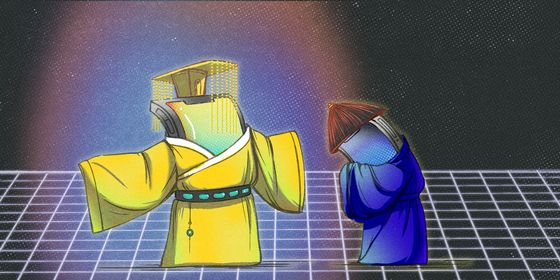How Communist China became a cradle for innovative startups and the plucky tech entrepreneurs that call it home
Whittled down from around 30 over the course of a weekend at Microsoft’s China R&D offices in Beijing’s bustling tech district Zhongguancun (中关村), six hopeful Chinese tech startups remained in the running. Would the victor be the minds behind a personalized fitness app or those who developed a platform for private equity transactions? Perhaps the creators of a journey planner complete with suggestions based on users’ hobbies?
They were competing for a guaranteed 50,000 RMB in seed money, but perhaps more tantalizing were the potential contacts that could be forged with representatives of the venture capital groups scrutinizing them. In the end, the March 2015 event concluded when a novelty check was handed to the creators of an app that hopes to replace employee workshops with an app that trains staff in operating procedures and measures milestones.
The scene was one that would have been alien to the Chinese mainland of a few decades ago, when the idea of Chinese venture capital funds on the prowl was just as outlandish a concept as the yet-to-be-invented smartphone.
But times have certainly changed. In 2015, of all the global technology companies worldwide with a market value of over a billion, the 50 top performers all came from China, Bloomberg reported in April. The pace and scale of this change in the Middle Kingdom is nowhere more apparent than Zhongguancun, the first successful creation from the Ministry of Science and Technology’s “Torch” program (火炬计划) in 1988.
While in many ways it still resembles the electronics markets of the 80s, jostling with patrons out to buy bargain-basement laptops, Zhongguancun today is in many ways the brainchild of Chen Chunxian (陈春先), a Sichuan physicist, who in the 1970s led a team of scientists to create China’s first tokamak reactor—a device first devised by Russian scientists in the 1950s to create and contain thermonuclear fusion power.
But it was Chen’s trip to Silicon Valley in the early 1980s that would lay the seeds for Zhongguancun. He returned with ideas regarding areas with a concentration of talent and technology, which would form the basis for the first and most successful of China’s innovation clusters.
As with the tokamak reactor, Chen both copied and innovated to create something that would work for China. Crucially for startups, these clusters had incubators for tech businesses, which offered free rent and connections with universities and government departments. A startup that was part of the Torch program also, crucially, had the green light from banks to receive loans.
Thus, somewhat ironically, startups—arguably the most cutting edge form of capitalism–in China arose from centrally-planned industry zones, an idea that sits quite comfortably with communism. Since then, China has developed something of an addiction to industry zones, creating tens of thousands of them throughout the country.
While at first this may seem entirely at odds with the entrepreneurial spirit of Silicon Valley, in reality the difference isn’t quite so pronounced. Andy Mok, the organizer of the Beijing Tech Hive and a partner at Songyuan Capital—the venture capital group that fronted the 50,000 RMB—points out that although China is often in the headlines for supporting tech businesses, Silicon Valley did not emerge from a vacuum.
Although many of the plucky, fiercely independent entrepreneurs who lead US startups today tend to play down the impact of government investment, in its early days, government funding in the form of defense spending poured into Silicon Valley, with the first government contract being awarded to Stanford researchers led by Frederick Terman in 1946.
If Chen is responsible for Zhongguancun, then Terman, along with William Shockley, who helped create and commercialize the transistor, are responsible for Silicon Valley. Terman encouraged his students to set up firms in the area, including the founders of Hewlett Packard. Later Stanford would lease areas to startup firms which included Lockheed Martin, today a beneficiary of extensive government largesse and one of the largest employers in Silicon Valley, in a pattern somewhat similar to that which characterizes Zhongguancun today.
One would think that with its proximity to China’s best universities, startups residing in Zhongguancun and greater Beijing would have no problem finding talent, but for Mok—also a former Rand corporation researcher who analyzed Chinese tech—it is perhaps the most significant challenge.
“Silicon Valley is a magnet for people with the right expertise,” Mok points out.
…
For the full story, purchase the newest issue now, or subscribe to get a full year’s worth of The World of Chinese. You can also find us on the Apple Newsstand store. Subscribe for a year and get 6 exclusive app-only issues.












